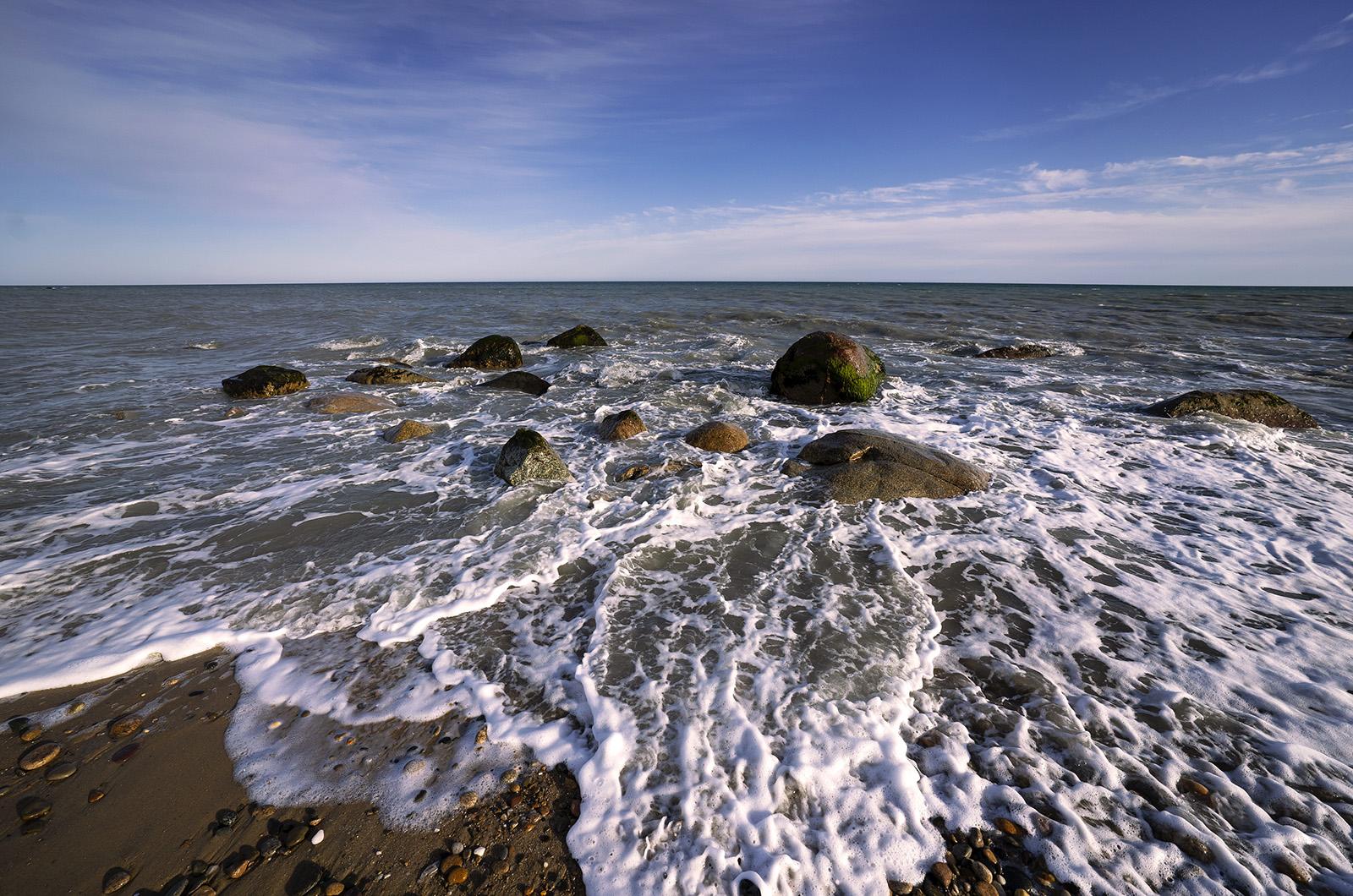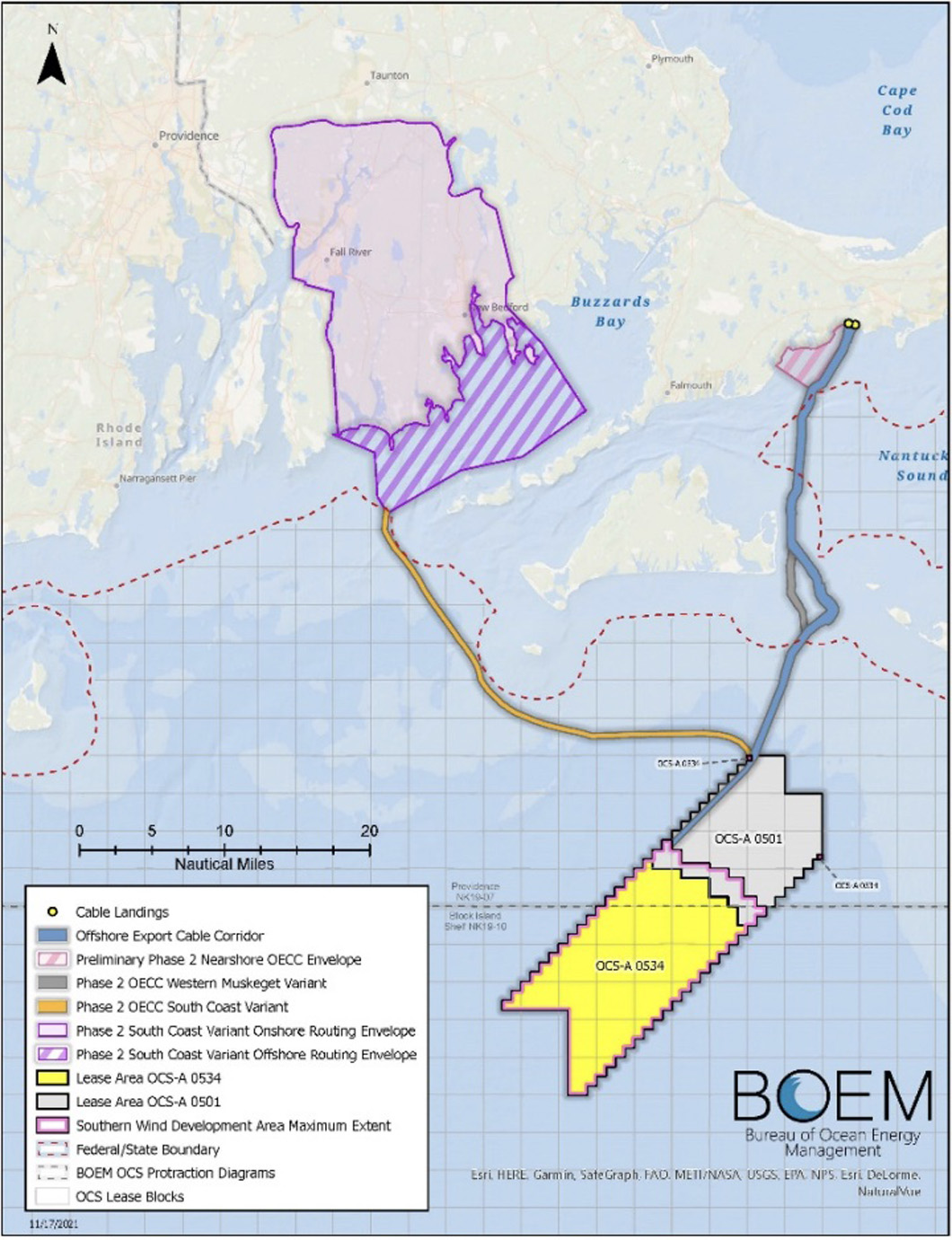The race for offshore wind south of Martha’s Vineyard experienced both strong tailwinds and heavy turbulence this week, with Vineyard Wind breaking ground on the nation’s first industrial-scale offshore wind farm just as global supply chain issues and rising commodities prices have stalled a second project.
Meanwhile, a third project planned for south of the Island, Park City Wind, is before the Edgartown Conservation Commission for review, as Island officials weigh another undersea cable proposal.
All three projects — Vineyard Wind, Commonwealth Wind and Park City Wind — are at least partially owned by Avangrid, a giant renewable energy company based in Orange, Conn. Vineyard Wind is a 50-50 joint partnership between Avangrid and a Danish company called Copenhagen Infrastructure Projects, while Avangrid owns 100 per cent of Commonwealth Wind and Park City Wind after the projects restructured in early 2022.
Each of the multi-billion-dollar projects have secured approximately one-third of a federal offshore lease area about 15 miles south of Martha’s Vineyard. And all three have proposed running undersea transport cables from their lease areas through the Muskeget Channel east of Martha’s Vineyard to connect with a switching station in Barnstable.
Vineyard Wind, which plans to produce 800 megawatts of energy using about 60 turbines, announced in a press release Tuesday, Nov. 1, that it had started construction on its undersea cables. Nearshore cable work off the south coast of Cape Cod is expected to begin in the coming days, the release stated.
The installation process is expected to continue through the fall of 2022 and into the spring of 2023, according to Vineyard Wind, and includes the burial of two cables beneath the seafloor about a mile east of Chappaquiddick. Work will be done by the Prysmian Group, an Italian manufacturing company, the company said.
A tug named Nicole Foss has started what is called a pre-lay grapnel run through the cable corridor to make sure the burial site is free of debris, according to a project update. The cable laying work will be conducted by another boat, the Cable Enterprise.
But just as Vineyard Wind breaks ground, Commonwealth Wind — an approximately 1,200 megawatt project planned for an area 22 miles south of the Vineyard — is facing a delay. In an Oct. 20 filing with the state, Commonwealth Wind asked the department of public utilities to suspend its review of the company’s power purchasing agreement for a month as it reassesses its financial viability.
“Global commodity price increases, in part due to ongoing war in Ukraine, sharp and sudden increases in interest rates, prolonged supply chain constraints, and persistent inflation have significantly increased the expected cost of constructing the project,” Commonwealth Wind wrote to the state. “As a result, the project is no longer viable and would not be able to move forward absent amendments to the [power purchasing agreements].”
Commonwealth Wind said that it could use the delay to explore more favorable tax incentives and financing options.
Vineyard Wind remains commercially viable, a spokesman said this week in an email to the Gazette, and is moving forward with construction. Vineyard Wind officials hope to have the project online by the end of 2023.
Meanwhile, Park City Wind is proceeding with its application to install two additional offshore cables beneath the ocean floor within Edgartown’s town limits. Unlike Vineyard Wind and Commonwealth Wind, which has committed its energy to Massachusetts, Park City Wind has an energy contract with the state of Connecticut.
At a meeting before the Edgartown Conservation Commission Wednesday, Oct. 26, Pat Johnson of Avangrid and Holly Carlson-Johnston of Epsilon Associates outlined the project’s community benefits and impact on Island waters.
The two offshore export cables would lie within a one-mile-wide corridor that extends north from the project’s lease area next to the Vineyard Wind project all the way to the West Barnstable substation. It is the same corridor where the Vineyard Wind cables will be laid, Ms. Johnston explained, and its location was determined “to avoid and minimize impacts and maximize successful cable burial.”
“The state has been heavily involved in the rating of the corridor,” Ms. Johnston told commissioners. “The cables themselves will only use a very narrow portion of the corridor identified.”
Ms. Johnston said environmental impacts would be minimal, as installation speeds are only about 100-200 meters per hour, and the installation vessels don’t reach speeds high enough to threaten wildlife such as the North Atlantic Right whale. The cables themselves would be buried between four and eight feet underground roughly 50 to 100 meters apart from each other.
“Most of the corridor will remain unaffected by the project,” Ms. Johnston said.
Given the overlap between Vineyard Wind and Park City Wind, and the expectation of more cable construction in the future, commissioner Edward Vincent asked if the proposed area was the most logical place for a corridor. Ms. Johnston said it depends on the project and its destination.
“What we’re trying to avoid here is what you sometimes hear called the spaghetti of cables,” Mr. Johnson said. “To have cables placed in an order that makes sense, not all over the place.”
Commissioner Maximillian Gibbs expressed concern about what would happen if the cables became exposed by a sand wave field or other factors.
“The installation [takes place] in a stable seabed, not in fields of sand waves,” Ms. Johnston responded. “The cables may be buried at a greater depth if a sand wave moves over them, but they’re in the stable seabed. They’re not expected to move.”
Ms. Johnston also noted that Avangrid will be conducting regular temperature surveys which could help determine if a cable becomes uncovered, as well as geophysical surveys and a habitat recovery plan that is still in the works. In the event a cable does become uncovered, cable protection measures such as concrete bags, rocks, or rock bags could help rebury them, she said.
Edgartown’s energy committee chairman Alan Strahler expressed support for the project, noting that the energy committee has already written a letter of support for the New England connector.
“[The project’s] impact on the seafloor is minimal,” Mr. Strahler said, adding that the project’s community benefits outweigh any potential risks. “Investment in key core infrastructure is one benefit, as is improving the electric grid’s resiliency on-Island.”
The commission continued the discussion on Park City Wind’s project until Nov. 30.








Comments (22)
Comments
Comment policy »